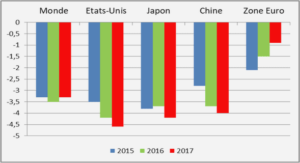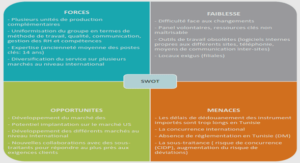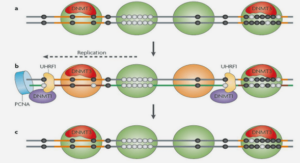Water contamination
Water is the most essential natural resource for all life on earth and a precious substance for human civilization. Of the total amount of water in the world, only 2.5% exists as freshwater, while 97.5% is seawater. Considering this small proportion of freshwater, about 90% is inaccessible for our use. ln many countries and regions of the world, approximately 70% of fresh water is used for agriculture. It is estimated that by 2050, in order to feed all the people on the planet, a 50% increase in agricultural production and a 15% increase in fresh water withdrawal will be necessary. Freshwater is a natural resource that needs to be very weil managed, since its misuse could lead to a permanent lack of fresh water. The population growth, climate change, land use change, energy choices, and global poverty have caused precipitous changes in freshwater quantity, availability, and quality [15] . Water contamination can be defined as any matter that, when introduced into it, becomes harmful to human health and nature, creating adverse conditions for social and economic activities, affecting the sanitary conditions of the environment [16] . Water contamination is the pollution offreshwater such as lakes, rivers, oceans, and groundwater by human activities (Figure 2.1).
Contamination interferes with the integrity of natural resources that preserve life in the biosphere, significantly affecting the environment [2]. The largest amount of accessible freshwater in the world is used by industries and cities, generating an enormous amount of wastewater containing numerous contaminants. The main water contaminants are suspended solids, chemical biodegradable organics, nutrients, hazardous, heavy metals, inorganic solids and biological pathogens. ln many parts of the world, the se contaminants are not treated or are only subjected to a treatment that does not effectively remove most of the pollutants. Human health suffers serious impacts due to the lack of drinking water, which cUITently affects many people in the world. Due to contamination of fresh water, the CUITent water supply faces a major problem, where a significant proportion ofpeople around the world still do not have access to adequate drinking water sources. This water scarcity aff1icts poor people most seriously, so, it is urgent to implement basic water treatment in the affected areas mainly where water and wastewater infrastructure are often non-existent [1]. Water scarcity places great pressure on society over its use and management.
Heavy metal contamination
Industries such as metal plating, mining, fertilizers, tanneries, batteries, pulp and paper and pesticides directly or indirectly discharge their wastewater containing heavy metals into the environrnent [6]. Contamination with heavy metals is of particular con cern because of the difficulty oftreatment and its persistence in the environrnent. Heavy metal is the term applied to atoms that have density more than 6 g/cm3 and occupy the central columns of the periodic table. The term heavy metal refers to a metallic chemical element that has a relatively high density and is toxic or poisonous at low concentrations. They cannot be degraded or destroyed. The toxicity of any compound, including metals, is directly related to the dose, the exposure time, the physical and chemical form of the elements, route of administration and absorption. At higher concentrations they can lead to poisoning [5] . It is believed that older people and children are more susceptible to toxic substances. Figure 2.2 shows a lake contaminated by industrial activities in China with heavy metals containing moderate to high contamination by Pb and Cr. Pollution levels were determined by checking the fish and crustaceans living in the region. Heavy metals in water which are most threatening due to their toxicity are arsemc, cadmium, chromium, lead, and mercury, ranking among the priority metals that are of public health significance.
Other examples of toxic heavy metals are manganese, chromiurn, cobalt, nickel, copper, zinc, selenium, silver, antimony and thallium [3]. Economic and technical issues allied with concem about a possible shortage offresh water lead to the seek of a cheap and efficient technique for the removal of heavy metals from wastewaters [19]. Remediation approaches, such as water reuse and recycling have been adopted in industries. However, they are not widely used due to technical and economic limitations. Therefore, the removal ofheavy metals from water has become a high priority within water treatment technologies. Heavy metals cannot be degraded or destroyed. Cadmium is one of the most polluting heavy metals which derives its toxicological properties from its chemical similarity to zinc, which is also very polluting. Cadmium is bio persistent and, once absorbed by an organism, remains resident for many years. The average daily intake for hurnans is estimated at 0.001 mg ofwater, being 1500-8900 mg considered toxic doses for humans [9]. Chromiurn is used in metal alloys and pigments for paints, cement, paper, rubber and other materials. Low-Ievel exposure may irritate the skin and cause ulceration. Long-terrn exposure can cause damage to kidneys and liver, and circulatory and nerve tissue damage.
Chromium accumulates frequently in aquatic life, increasing the danger of eating fish that may have been exposed to high levels of chromium. Copper in high doses can cause anemia, liver and kidney damage, and stomach and intestinal irritation. Copper normally occurs in drinking water from copper pipes as weil as from additives designed to control the growth of algae. High levels of exposure can result in toxic biochemical effects in humans, which in tum cause problems in haemoglobin synthesis, effects on the kidneys, the gastrointestinal tract, joints and the reproductive system, and acute or chronic damage to the nervous system. Nickel in excessive amounts, can become mildly toxic. Long-term exposure can cause decreased body weight, heart and liver damage, and skin irritation. Nickel can accumulate in aquatic Iife, but its presence is not magnified along food chains [1]. Chrome compounds in water-solution in the +6-oxidation state are anionic contaminants extremely toxic for hum ans and animais being actively transported into the cells of the body. Once Cr (VI) is inside the cells, it is converted to unstable reactive intermediates which are bonded to cells being a strong mediator of Cr (VI) toxicity and carcinogenicity [5]. The carcinogenic effects ofhexavalent chromium are more evident in the respiratory tract, but more recent evidence indicates that it can lead to other cancers. Workers are exposed to Cr (VI) through inhalation which leads to lung cancer. The most contaminating and polluting industries are chrome plating, leather tanning, stainless steel production and chrome pigment manufacturing [6]. Other studies show that ingestion or skin contact with Cr (VI) can lead to its reduction to Cr (III) which connects to DNAmodifying proteins and can lead to cancer in all human organs [7].
Wastewater treatments
Wastewater treatment is a process used to rem ove contaminants from wastewater or sewage and con vert them into an effluent that can be retumed to the water cycle with acceptable impact on the environment, or reused for various purposes (called water recovery). Water recyc\ing is a means ofsaving water in industries, where wastewater that would be discharged, can be used in a lower quality application. Water recovery refers to the reuse of wastewater produced elsewhere such as in industrial cooling, power generation and boiler feed. However, wastewater sometimes needs to undergo a tertiary treatment before effluents are reused or recycled, directl y or indirectly in the industry [1]. Wastewater treatment usually involves four stages, called pre-treatment, pnmary, secondary and tertiary treatments. The pre-treatment removes ail materials that can easily be collected before they damage or clog primary treatment pumps and clarifier lines. Objects normally removed during pre-treatment include garbage, tree limbs, leaves, branches and other large objects. The primary treatment consists of temporarily holding the waste in a basin where heavy solids can settle to the bottom while oil, grease and lighter solids float to the surface. The settled and floating materials are removed and the remaining liquid can be discharged or subjected to secondary treatment. Sedimentation is the most used process at this stage.
The secondary treatment rem oves dissolved and colloidal substances remaining in water after the primary treatment. The secondary treatment involves microorganisms to digest organic contaminants. Oxygen and agitation are also supplied to water in order to keep microorganism alive. Rotating Biological Contactors (RBCs), Trickling Filters, Activated Sludge and oxidation ditches are secondary treatments. Tertiary treatment is the step of polishing the effluent to eliminate specific contaminants not removed in the primary and secondary treatment steps. Various tertiary wastewater treatment technologies for heavy metal removal have been extensively studied and developed. Operations including ion exchange, photocatalysis and adsorption have been used for the elimination of metals from aqueous environments [10]. Most of these processes are not appropriate alternatives for the elimination of trace amounts of metal ions because of driving force, inadequate reactivity and large amounts of required materials, energy consumption and high cost [6]. Among these technologies and considering the cost-benefit, adsorption can be featured as an economic and effective method for the removal ofheavy metals widely used and recognized due to the availability of adsorbent materials, reversibility and flexibility in design and operation [6]. Adsorption is considered a tertiary treatment technology. Activated carbon (AC) is the most widely used adsorbent for the removal of heavy metals from wastewaters. However, the sources of commercial coal-based AC are almost depleted, resulting in the increase of price, in other words, AC is relatively expensive. So, the search for an abundant and cheap alternative to activated carbon has become a main research focus [5]. Low-cost adsorbents are recognized as effective and economic methods for low concentration heavy metal wastewater treatment. Biosorbents are low-cost and high effectiveness adsorbents materials that has been confirmed like very promising for the removal of heavy metals from wastewaters. These biosorbents can be provided from sources such as non-living biomass, al gal biomass and microbial biomass [20]
Foreword |




